Conrad Mine
Conrad Mine is a silver and base metals mine located near Inverell in NSW’s Northern Tablelands. The mine operated sporadically between 1898 and 1957 under various names and operators.
Although previous rehabilitation has been undertaken the site remains one of the highest risk sites on the Derelict Mines Program database due to offsite environmental impacts.
Derelict Mines Program (DMP) has previously completed works at the site capping the upper tailings and improving drainage, however as part of the continual risk assessment and mitigation under the Program further works will be completed at site during 2017. The 2017 works will consolidate mine wastes from around the site and encapsulate these at the lower tailings area.
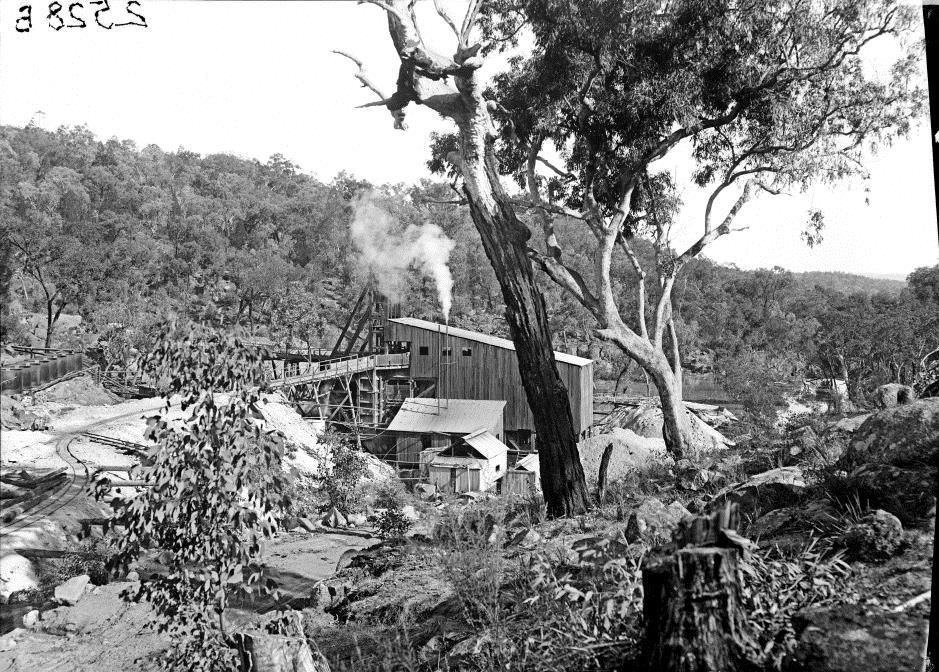
Current Site Description
The site is currently highly disturbed and there are numerous significant historical features remaining at site such as the Conrad Shaft, rock stack at location of the King Conrad Shaft (pictured below) and numerous footings and other remnants from processing and concentrating infrastructure.
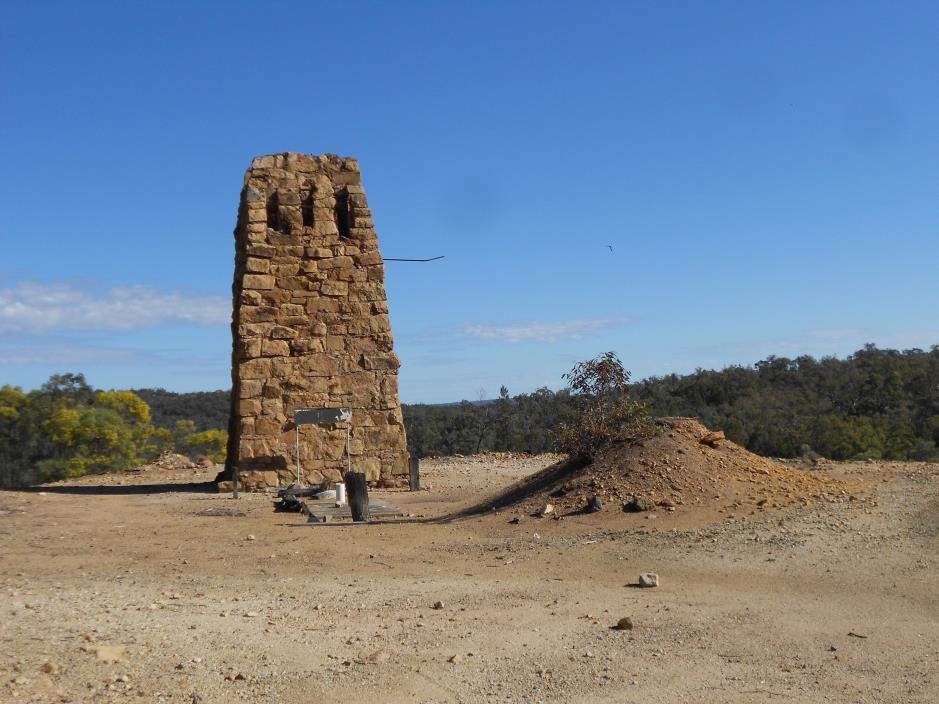
Rehabilitation Works
The Derelict Mines Program was successful in winning an Environmental Trust a grant of $1,155,000 in the early 2000s. The works were aimed at reducing pollution to Borah Creek, achieving site stability and a reduction of safety hazards. Works included:
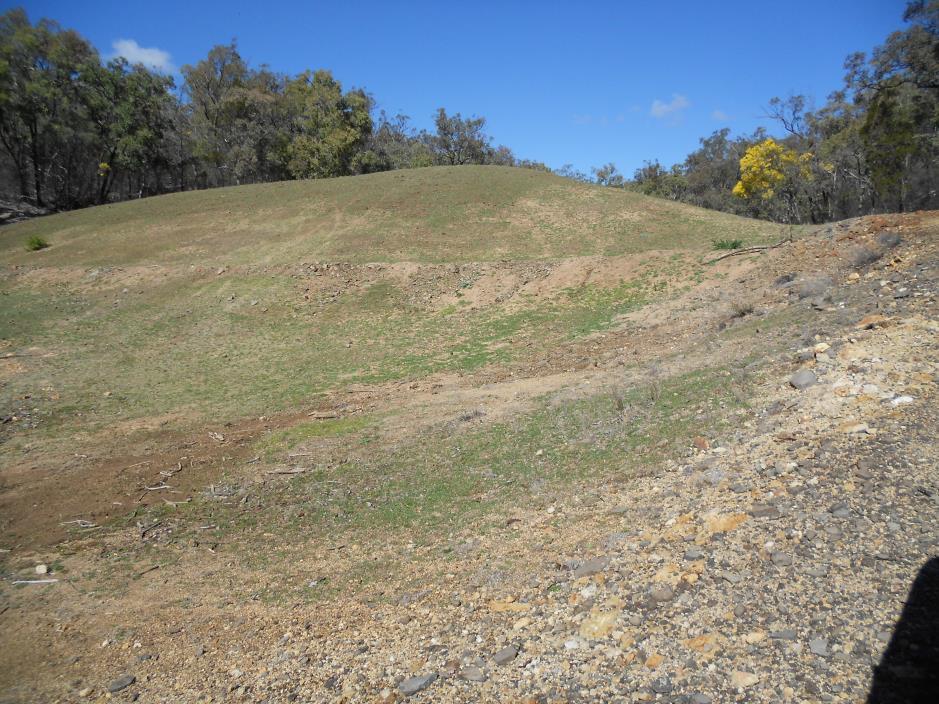
Fencing of shafts and adits with bat friendly fences to prevent access to the underground workings.
- Capping and containment of the upper tailings dump (pictured right), to prevent erosion of heavy metal contaminated materials and to prevent contaminated leachate seepage.
- Containment of the lower tailings dump via installation of gabion basket retaining and diversion of clean water flows to prevent erosion of heavy metal contaminated materials directly into Borah Creek.
- Water diversion structures and creek bank stability works around the Conrad shaft and upper Borah Creek areas to prevent erosion of heavy metal contaminated materials and leachate production.
- Protection of heritage relics and cultural aspects of the site.
A study was commissioned by DMP in 2013 (report produced in 2014) to investigate potential off site impacts. The report outlines remediation actions necessary to reduce environmental liabilities at the site. It noted that only a small number of mine waste domains contribute to the high contaminant levels downstream. These are:
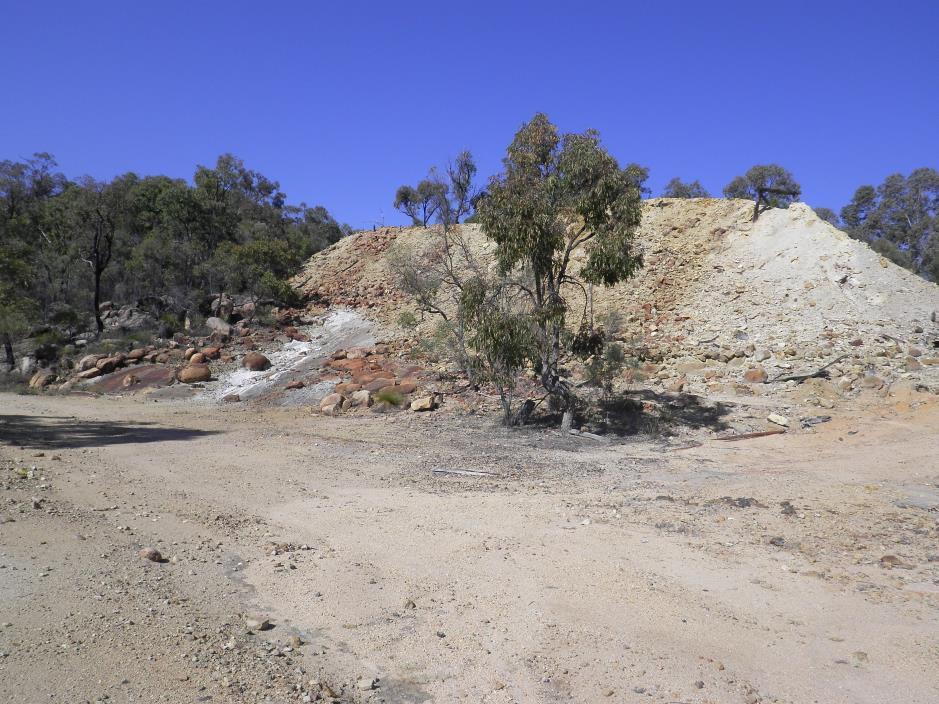
- Waste rock immediately below the Conrad Shaft and along the haul road heading west from the shaft
- Waste rock pile south of the King Conrad Shaft
- The lower tailings emplacement (LTE)
DMP has finalised design for these works and is currently finalising approvals for works to proceed in mid-2017. The aim of the works is to address outstanding environmental issues on site and will include:
- consolidation of waste rock piles to lower tailings emplacement
- encapsulating lower tailings/waste rock emplacement
- import of clean fill material to reinstate levels around Conrad Shaft
- installation of drainage structures, filter bunds and sediment retention dams to slow material moving off site.
Mine History and Heritage Value
Conrad Mine was sporadically operated between 1898 and 1957 under various names and operators.
The Conrad shaft was the first operational shaft, followed by the King Conrad shaft in 1900. Later smaller shafts were added, such as the Moore and Allwell shafts.
The Conrad mine ceased activities on 27 December 1957 due to low metal prices, poor grade ore and high cost of production. The plant and equipment were dismantled in 1958-1959.
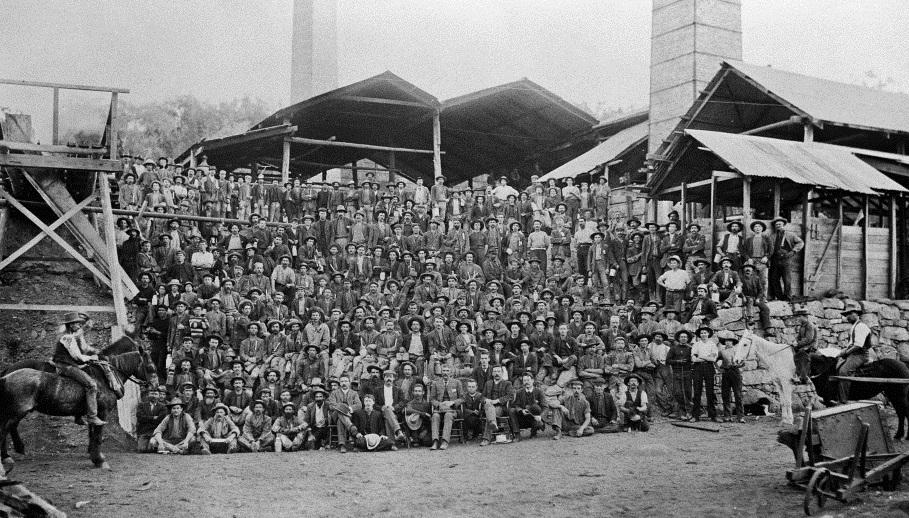
A small amount of ore was obtained from the Allwell dumps in 1966 (the ore in the Allwell shaft was hand-picked with no machinery involved in the operations). Occasional exploration works have been conducted on site since the closing.
During the operations approximately 177,800 t of ore was raised, which produced approximately 17,800 t of concentrate, consisting mainly of silver-lead, copper and arsenic.
The mining activities consisted of tunnelling on the lode for long distances underground, with tunnels connecting different areas of operations, such as the King Conrad, Conrad and Moore shafts. The deepest shafts extend approximately 270 m Below Ground Level (BGL). The ore was concentrated on site and the resulting mainly silver-lead and copper-tin rich concentrates smelted and transported from the site.
It was noted in 1922 that the waters occurring in the mines contain high concentrations of arsenic and should be handled carefully. The significant environmental impacts caused by the site were recognised in the late 1970’s. In 1980 some of the old shafts and collapsed stopes at the site were permanently covered for safety reasons.
According to Burke (2000) the site has moderate heritage value relating to European mining history and artifacts, and some value for scientific, educational and tourism activities. Therefore preserving these values is an important component of any proposed further remediation/rehabilitation works at the site.